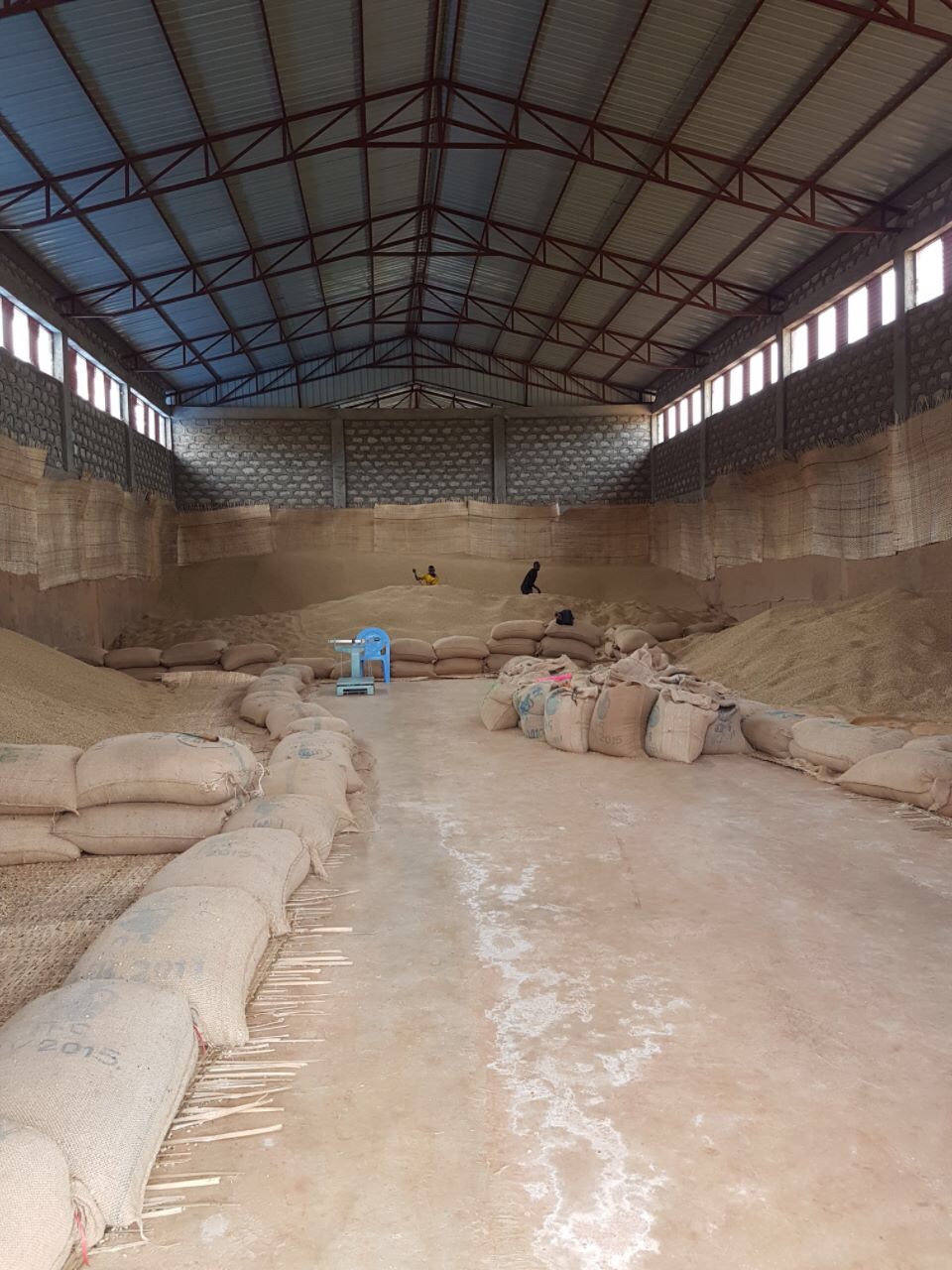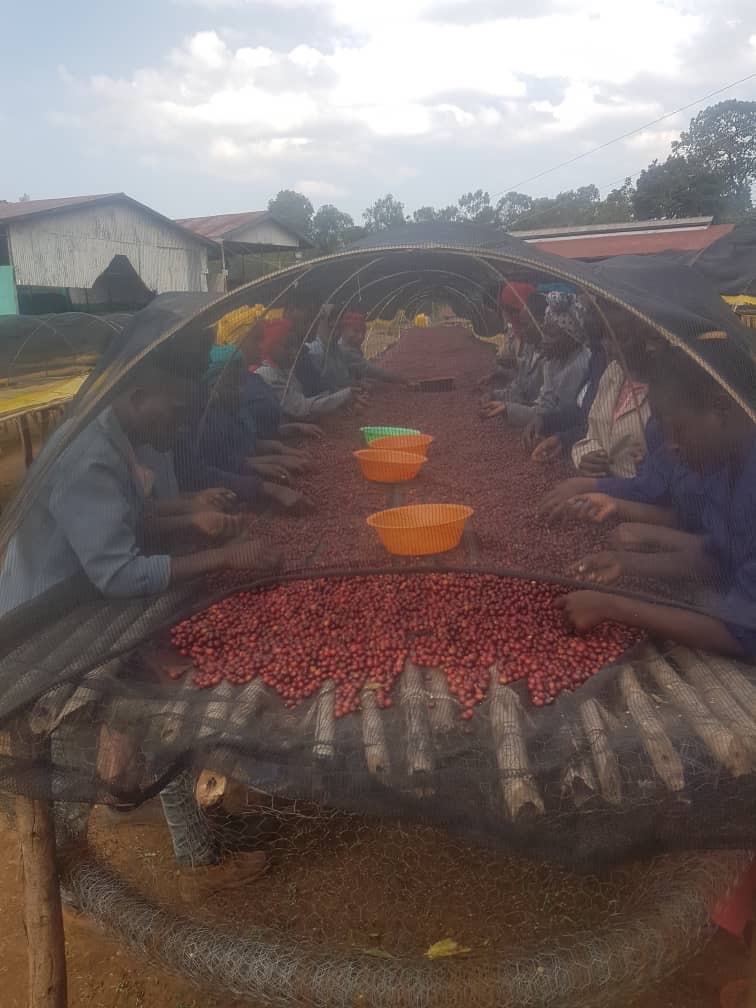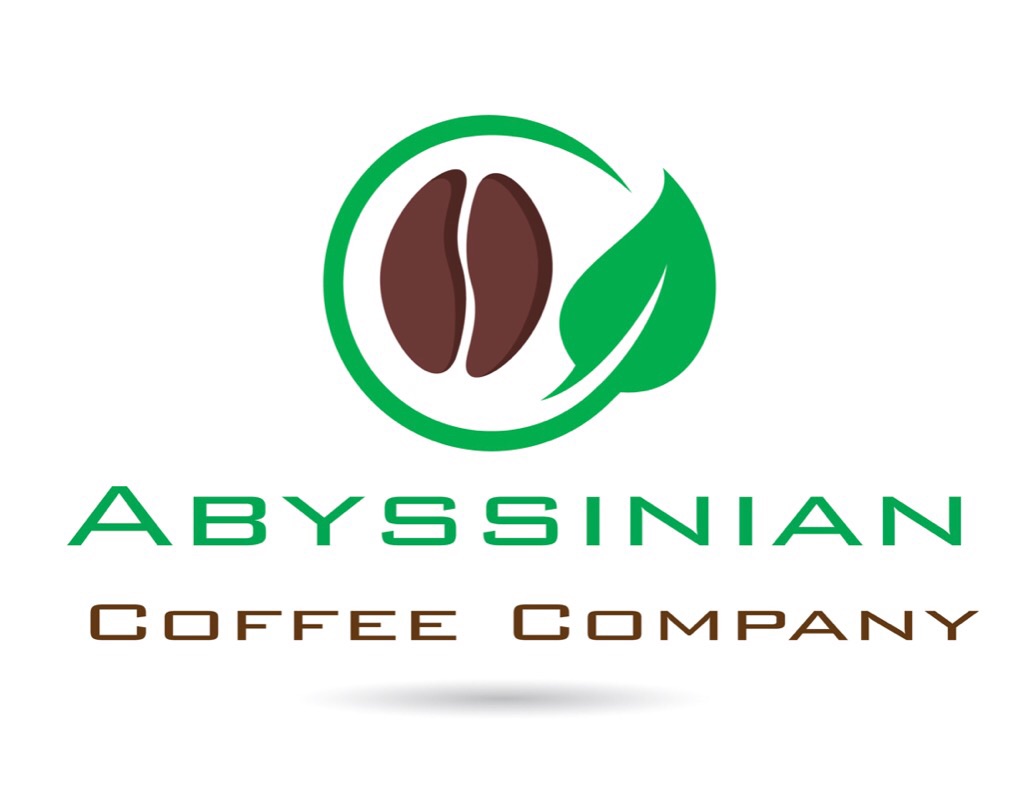A typical Ethiopian flavor profile is hard to depict because of the range in varieties, but during our daily cupping we normally find a clean fruity/winey cup with high acidity and floral notes. The complexity of Ethiopian coffee lies in the fact that each smallholder could cultivate its own unique variety – resulting in a collection of small unique batches that blend into a colorful mélange
OUR STORY
Ethiopian coffee


Most Ethiopian coffee we drink is a blend, but for the purists, its possible to find single varieties as well. The reason for this is the diversity in coffee varieties, it is estimated that Ethiopia has between six and ten thousand. This implies that each village or town could host its own unique variety. All these unspecified varieties are marked as ‘Mixed heirloom varieties‘. Dega, Kurume and Wholiso are examples of well-known ancient varieties that earned a name for themselves.Ethiopia’s coffee industry is dependant on numerous coffee smallholders, usually entire families that cultivate between 0,8 and 2 hectares. These smallholders deliver their ripened cherries directly to local washing, milling and drying stations – unlike other smallholders in the coffee industry that deliver in parchment.


The rich soil, its geographic diversity, and genotypic variety make Ethiopia unrivalled as a coffee origin. The samples we receive from our partners throughout the year never cease to amaze us.
We are often perplexed about Ethiopia’s complex mapping structure, however. Where do coffee regions begin, end, and which woredas (districts) can be found within these? The search for accurate information can be overwhelming and confusing. You simply want to know where your coffees

